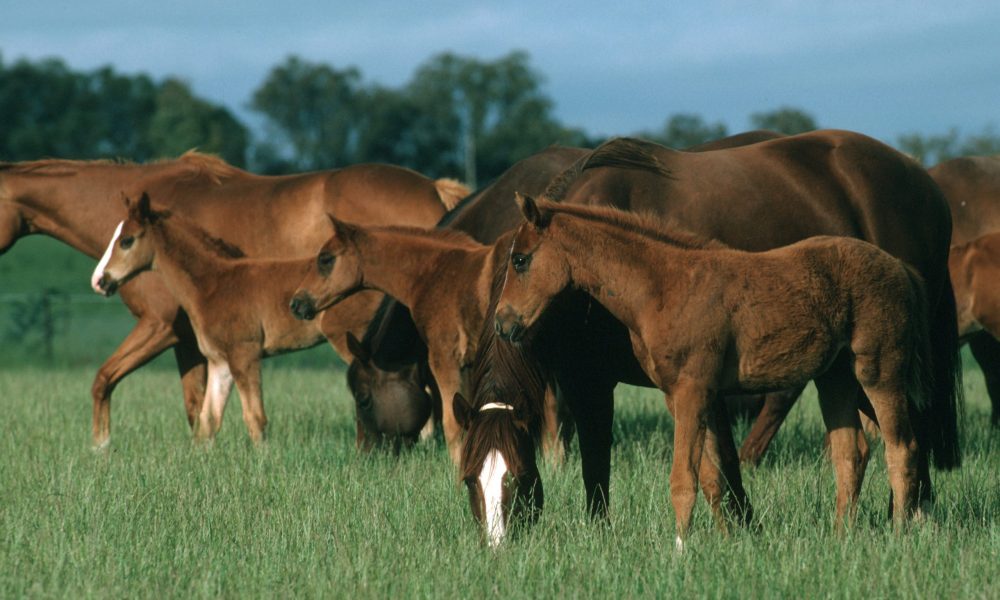Breeders keen to support funding of independent welfare body

TAWWG report-proposed levy of $300 on foal declarations would be welcomed by industry participants
Breeders across Australia have said time is of the essence to address the seismic issue of welfare, with the prevalent topic highlighted by the recently released Thoroughbred Aftercare Welfare Working report.
The 140-page report on Monday received a key endorsement in the shape of agricultural minister David Littleproud, providing the governmental impetus to enact the 46 recommendations highlighted in the commissioned independent document.
“On a scale of one to ten, it’s a ten,” said Vinery Stud’s Adam White when asked yesterday about the importance of the Dr Denis Napthine-led report.
“I haven’t spoken to anyone in the industry who doesn’t think (welfare) is one of our greatest challenges. It’s a big step forward and there’s a lot of work still to be done, but if we can all unite together, we’re heading in the right direction at least.”
Two Bays Farm manager Rob Carlisle, speaking to ANZ Bloodstock News yesterday, said the situation, if allowed to continue unabated, will ‘escalate to the point of no return’.
Both White and Carlisle welcomed the release of the report, which was commissioned in light of a 2019 ABC documentary on malpractice in thoroughbred welfare, and, in particular, suggested that breeders would get behind the key recommendation for the creation of an independent body to oversee such welfare issues.
Known as Thoroughbred Welfare Australia, which would oversee the implementation and governance of welfare standards in the country, both White and Carlisle suggested breeders would be keen to contribute to the funding of such an organisation.
The funding model to support the newly-created body proposed by the paper included a $300 levy on breeders when submitting foal ownership declarations.
The total amount raised from such a levy is estimated to be around $3.7 million, a figure that, according to the model, represented the highest proportion of funding for the body, with a levy on owners of the same amount estimated to raise $3.3 million, while jockeys and trainers would contribute one per cent of the ten and five per cent of prize-money earned from races. Additional funding from sponsorship, Racing Australia and donations is proposed, taking the total amount to in excess of $10 million annually.
“We need an independent team to oversee this,” Carlisle said. “They’ve got to come up with a way where it’s not going to cost your Ciaron Mahers four or five hours a week (to ensure the welfare of retired thoroughbreds).
“Mick Price did a bit of an off-the-track jump off a while back, and that was held in good light. I’d love to get involved but you look at your work schedule and when are you going to fit it in?
“Also, welfare does cost money, and if we’re all paying for it, I think that’s fine. It all depends on what people are willing to pay for. I think a levy such as that, in the scheme of things, I think it’s got to happen.
“We can throw as much money as we want at it, but it has to be used correctly.”
White added: “I think most breeders would be happy to contribute something towards it. Without knowing what that final fee is. The trainers’ association and jockeys’ association would all be contributing, so it all helps.
“I don’t think it should be centred around the breeders, but even betting revenues would be contributing to it along with the trainers and the jockeys, as well as money through sponsorship. So if they can work out what’s fair and what contribution each area is to pay, then I think that’s positive.”
Although the 46 recommendations were wide-ranging, the report dismissed the suggestion of creating an industry abattoir or knackery, saying the use of such facilities was a ‘highly emotive’ subject for the general public.
Trainer Peter Moody, in the report called for an industry facility to directly control the slaughtering of racehorses, a move which would see the industry responsible for such welfare issues relating to their use.
“If we accept that not all horses can be rehomed or re-educated, and all of them at some point come to the end of their life, then why not take charge of the process ourselves,” Moody said.
“I believe the racing industry can play a bigger part in aftercare and welfare of thoroughbreds and one way of doing that is to establish our own processing works and take responsibility for what happens to them.”
Carlisle, too, voiced support for the idea and suggested any framework which does not facilitate the use of an abattoir or knackery ignores the very fact that not all racehorses can be rehomed.
“You can’t rehome every horse, that’s just the nature of the beast,” Carlisle said.
“Not all horses that retire off the track can be reschooled, and then given to a 15-year-old girl. It just doesn’t happen. There needs to be someone who says, ‘OK, this horse is too dangerous to be rehomed’.
“An RSPCA-approved abattoir, with a vet and possibly a steward present and you’d use a transport company as opposed to a cattle truck to move it. I think those sorts of things, these are things that people are washing their hands of.”


